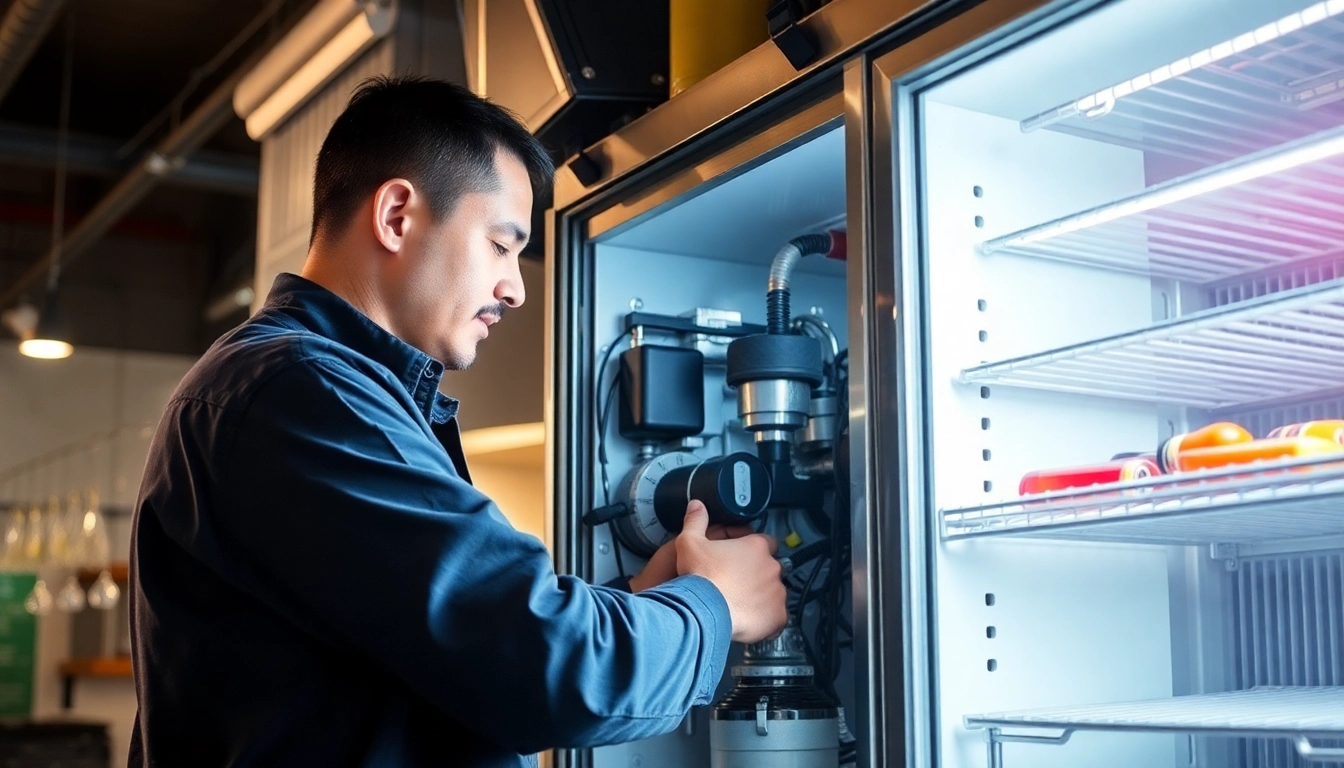Understanding AC DC TIG Welders
What is an AC DC TIG Welder?
An AC DC TIG welder is a versatile machine that utilizes both alternating current (AC) and direct current (DC) for TIG (tungsten inert gas) welding. This dual functionality allows welders to work with a wide variety of metals and thicknesses, offering flexibility that is particularly beneficial in various applications, from automotive to aerospace industries. In AC mode, the welder efficiently handles aluminum and magnesium, making it ideal for thinner materials. Conversely, the DC mode is preferred for welding steel and stainless steel, providing a stable arc and precision needed for critical welds.
Benefits of Using AC DC TIG Welders
The ac dc tig welder offers several advantages that make it a preferred choice for professional welders:
- Versatility: The ability to switch between AC and DC enables work with various materials, reducing the need for multiple welding machines.
- Quality of Welds: TIG welding produces high-quality, precise welds with minimal spatter, contributing to a cleaner work environment.
- Control: These welders allow fine adjustments to heat input, which is crucial for thin materials.
- Suitable for Complex Shapes: The precise control facilitates welding in tight angles and difficult to reach areas.
Key Features to Look For
When selecting an AC DC TIG welder, consider the following key features:
- Amperage Range: Ensure it can handle the thickness of the materials you plan to weld.
- Pulse Feature: This allows for precise control of heat, especially beneficial in thin materials.
- Foot Pedal Control: Enables better control over the welding process while keeping hands free to manipulate the torch.
- Portability: Depending on your workspace, a lighter model may be necessary for easier maneuverability.
Top AC DC TIG Welders for Your Workshop
Best Models Under $1000
For hobbyists or those in need of a budget-friendly option, several excellent AC DC TIG welders are available for under $1000. These models often provide a balance of quality and features that suit both beginners and experienced welders.
Some notable models include:
- Eastwood TIG 200: Priced around $999, this model is versatile for different metals and includes a foot pedal for added control.
- PrimeWeld TIG225X: Approximately $749, it comes with a user-friendly interface and excellent customer support.
- YesWelder TIG-250P: Retailing at around $699, it offers dual voltage and a wide amp range, making it suitable for various tasks.
Reviews of Industry Leading Brands
Several brands dominate the AC DC TIG welder market, each offering unique features that cater to different welding needs. Here’s a look at some of the leading brands:
Everlast
Everlast is known for its durable and affordable welders. Their models, such as the PowerTIG 200DV, provide dual voltage capabilities and a solid performance in both AC and DC modes.
Miller Electric
Miller’s Syncrowave series is highly regarded for its top-notch quality. The Syncrowave 210 model is equipped with Auto-Set technology, allowing for easy customization of settings.
Lincoln Electric
Lincoln’s Aspect series combines portability with advanced features, making it a favorite among both professionals and hobbyists. The Aspect 230 is particularly noted for its high duty cycle and ease of use.
Pricing Comparison and Value Analysis
Understanding the pricing landscape is crucial for making informed decisions. While prices vary widely based on features and brand reputation, it’s essential to assess what you get for your investment.
For instance, the Eastwood TIG 200 offers a great entry-point price while providing features comparable to more expensive models. On the high end, the Miller Syncrowave 300, though pricier at around $12,305.00, offers commercial-grade capabilities that justify the cost.
Conducting a thorough analysis of features against pricing can reveal which models provide the best value without compromising quality.
Essential Techniques for Effective TIG Welding
Setting Up Your AC DC TIG Welder
Proper setup is critical for effective TIG welding. Here are some steps to ensure your welder is ready for operation:
- Choose the Right Electrode: For aluminum, use a 2% thorium tungsten; for steel, a pure tungsten electrode.
- Set Up Your Argon Cylinder: Ensure the gas is flowing correctly. Check for leaks and adjust the flow rate per the manufacturer’s recommendations.
- Configure the Machine: Set the correct amperage, AC frequency, and pulse settings based on the thickness and type of metal.
- Inspect Your Torch and Ground Clamp: Replace any worn components to maintain a stable arc.
Welding Aluminum vs. Steel: Techniques and Tips
Welding different materials requires distinct techniques:
Welding Aluminum
When welding aluminum, preheating may be necessary to avoid cracking. Use AC current and maintain the tungsten electrode at a safe distance to prevent contamination. A well-prepared surface is key—thoroughly clean the metal to eliminate oxides before beginning.
Welding Steel
DC current is typically used for steel welding. The angle of your torch plays a significant role; keep it between 15 to 20 degrees to create a consistent bead. Watch for warping and adjust your travel speed accordingly.
Common Mistakes and How to Avoid Them
Even experienced welders can make mistakes. Here are common errors and tips on avoiding them:
- Inconsistent Travel Speed: Maintain a steady speed to ensure even weld beads.
- Poor Gas Coverage: Ensure adequate flow of shielding gas to protect the weld from contamination.
- Incorrect Electrode Distance: Keep the electrode at the optimal distance from the workpiece to maintain a stable arc.
Safety Measures for TIG Welding
Protective Gear and Equipment
Safety in welding is paramount. Always wear appropriate gear, including:
- Welding Helmet: Choose one with auto-darkening features for better visibility.
- Protective Clothing: Wear flame-resistant clothing and gloves.
- Respirator: Use a respirator if working in a poorly ventilated area to protect against harmful fumes.
Work Area Safety Checklist
Before starting, conduct a safety inspection of your workspace:
- Clear any flammable materials from the vicinity.
- Ensure proper ventilation to avoid fume buildup.
- Confirm that your equipment is in good working order and free from damage.
Emergency Procedures
Being prepared for emergencies can make a significant difference. Keep a first-aid kit nearby, and ensure all personnel are aware of emergency exits and fire extinguishers’ locations. Conduct regular safety drills to instill a culture of safety in your workshop.
Frequently Asked Questions about AC DC TIG Welding
Is AC or DC better for TIG welding?
DC TIG welding is generally preferred for materials like steel due to its smooth arc and fine heat control, making it easier to achieve high-quality welds. AC is favored for aluminum and magnesium due to its cleaning action that helps remove oxides.
Can you use an AC DC TIG welder for all metals?
Yes, an AC DC TIG welder gives you the capability to weld a broad range of metals, including aluminum, steel, stainless steel, copper, and more. However, it’s essential to adjust the settings based on the specific metal type and thickness for optimal results.
Maintenance Tips for Longevity
To ensure your AC DC TIG welder lasts, regular maintenance is crucial:
- Clean the Torch: Regularly inspect and clean the torch and tungsten electrode to avoid contamination and ensure a steady arc.
- Inspect Cables: Look for wear and tear in cables and hoses to prevent any issues during the welding process.
- Follow Manufacturer Recommendations: Adhere to the maintenance schedule recommended by the manufacturer for best performance.


